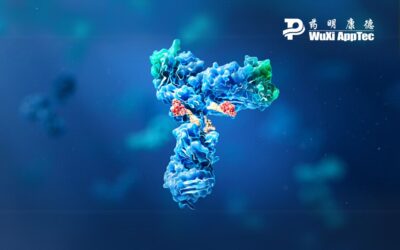PROTACs, otherwise known as PROteolysis TArgeting Chimera, emerged as a novel therapeutic modality in drug development and currently show promising clinical results for tackling some of the most complex diseases.
PROTACs are designed to leverage the body’s internal protein disposal system, the ubiquitin-proteasome system (UPS), to degrade target protein. A PROTAC degrader is a chimera and is consisting of three parts: two ligands and a linker. The first ligand binds to the target protein, which is disease-causing. The second ligand attaches to the ubiquitin E3 ligase, which transfers ubiquitin molecules to the target protein, and the tagged protein is subjected to proteasome-mediated degradation. The linker is mostly 5-15 carbon in length and connects the two ligands.
PROTACs have potential advantages over conventional small molecules. They can target “undruggable” proteins that were previously considered inaccessible by small molecules. Different from occupancy-driven pharmacology, PROTACs lead to a more durable loss of activity by the complete degradation of pathological proteins. Furthermore, PROTACs can overcome drug resistance resulting from overexpression or mutation of the target protein.
PROTAC Differentiators and Unique Challenges
Many factors differentiate PROTACs from typical small molecule drugs. Developers are keenly aware of the Lipinski Rule of Five, which helps to screen drug-like molecules. Small molecules that fall within Lipinski’s rule will have better pharmacokinetic properties and higher bioavailability in vivo.
This is especially important to PROTACs because PROTACs are beyond the rule of five. A typical PROTAC molecular weight (MW) is much higher than 500 Da, though the Lipinski rule requires drug candidates to be below that. And other rules (i.e., lipophilicity, hydrogen bond donors or acceptors and polar surface area) are also difficult to achieve for PROTACs. Consequently, PROTACs are susceptible to poor in vivo absorption and permeation, making it challenging for candidates to advance to clinical development.
Don’t Give up Hope: Strategies for PROTAC Development
Developmental challenges are evident, but companies aren’t slowing down discovery efforts. There are myriad strategies to ensure higher rates of success. PROTACs in clinical trials are showing positive results, and as the modality ages, we are learning more about what is beneficial to development, and what is not. Here are some key insights to alleviate common setbacks:
Optimization of PROTACs
Screening PROTACs with drug-like properties has always been the expectation of chemists. However, traditional pharmacokinetic screening strategies and experimental methods may not be suitable for PROTACs. Scientists found that PROTACs with high oral bioavailability have unfavorable in vitro data. Therefore, more caution is needed in screening compounds using in vitro data.
E3 ligases and their ligands
More than 600 E3 ligases have been discovered in the human genome, but only a few are commonly used in PROTACs. Chemists are exploring new E3 ligases and their ligands that can be used in PROTAC design. Since the expression of E3 ligases is tissue-dependent, it is always challenging to choose a suitable E3 ligase for a specific target protein.
Targets for PROTACs
Well-proved drug targets are relatively easier to develop. The first PROTAC entering clinical trials targets androgen receptors, a well-established drug target. However, PROTACs show a fascinating potential to target historically undruggable proteins. The future trend is undoubtedly to focus on undruggable targets.
The Future of PROTAC Development
As of mid-2021, there are two PROTACs in phase II clinical trials, showing progress as targeted prostate and breast cancer therapies. Just five years ago, the drug development world was not speaking about PROTACs the way they are now, as they continue to shine a light on complex diseases and cancers.
PROTAC preclinical and clinical testing is still relatively new. Its DMPK, toxicology, pharmacology and bioanalysis challenges are well documented and continue to provide developmental hurdles. Through further investigation, testing and research, PROTACs could provide health solutions to once ‘undruggable’ diseases.
As a global company with operations across Asia, Europe, and North America, WuXi AppTec provides a broad portfolio of R&D and manufacturing services that enable the global pharmaceutical and life sciences industry to advance discoveries and deliver groundbreaking treatments to patients. Through its unique business models, WuXi AppTec’s integrated, end-to-end services include chemistry drug CRDMO (Contract Research, Development and Manufacturing Organization), biology discovery, preclinical testing and clinical research services, helping customers improve the productivity of advancing healthcare products through cost-effective and efficient solutions. WuXi AppTec received an AA ESG rating from MSCI for the fourth consecutive year in 2024 and its open-access platform is enabling around 6,000 customers from over 30 countries to improve the health of those in need – and to realize the vision that “every drug can be made and every disease can be treated.”


